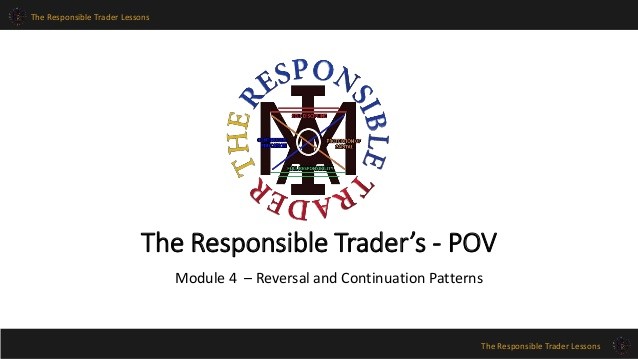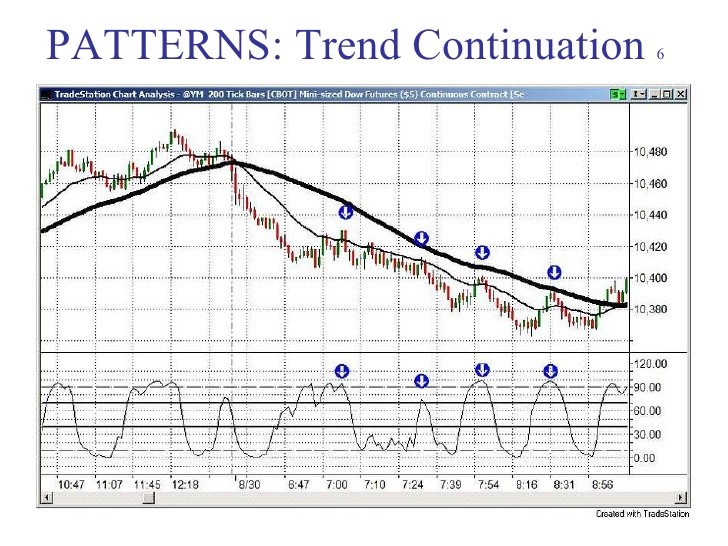Trend Continuation Patterns_1
Post on: 11 Апрель, 2015 No Comment

Triangle
Triangle is one of the most frequently used continuation patterns. The Triangle pattern is a combination of support and resistance levels.
There are three types of triangles:
- ascending;
- symmetrical;
- descending.
In the Ascending Triangle, the first trend line is the horizontal resistance line and the second trend line is the diagonal line formed by ascending troughs. It means that bulls cannot break a certain resistance level and the price moves between the horizontal and diagonal trend lines until bulls eventually break the resistance. As you can see at the chart minimums are moving higher and higher. The Ascending Triangle is a bullish continuation pattern. As a rule, in the Ascending Triangle the price breaks above the resistance level.
The Ascending Triangle occurs in the uptrend and is directed to the most probable price breakdown, thus, prices leave the triangle the same way as they entered it. However, sometimes the resistance level is so strong that bulls cannot win the struggle and have to step aside giving the way to bears. Thus, one should be ready that the price may break the resistance level and move upwards as well as not break the resistance level and move downwards.
Figure 1 Ascending Triangle
The Symmetrical Triangle is a graphical model in which the slope of maximum prices and the slope of minimum prices for a certain period converge. In other words, the support line of the trend continuation pattern is ascending and the resistance line of the trend continuation pattern is descending. When the support and resistance lines converge, a symmetrical triangle forms. The Symmetrical Triangle signals that bulls and bears are vague about how the market will behave, therefore, they are not active. Supply and demand on the Forex market in this situation are restrained. The Symmetrical Triangle pattern indicates the continuation of the trend that had been on the market even before the prices entered the pattern. However, the direction in which the price breaks the pattern is even more important than the pattern type. The Symmetrical Triangle is sometimes called a coil in which prices consolidate after a sharp decline or rise. If we divide the Symmetrical Triangle into three equal parts, then we will see that the breakout of price occurs either in the third part of the pattern or in the middle of it. The convergence of support and resistance lines determines the place of the breakout: breakout can occur to the upside or downside. After the breakout, the movement corresponds to the base of the triangle (A-B) (Figure 2).
Figure 2 shows the Symmetrical Triangle. After the breakout of the Symmetrical Triangle downwards, the movement of the descending trend becomes stronger.

The Descending Triangle is the opposite of the Ascending Triangle. The pattern is formed by the flat support line and downward sloping resistance line comprising the sequence of descending maximums. It means it is more likely that bears will defeat bulls. Bears are trying to break the support line. At the chart below, you can see that the price is falling until it eventually breaks the support line.
Figure 3 shows how price gradually forms descending maximums.
Flag
Flag is the most reliable continuation pattern. Flag indicates a short-term consolidation period after the dynamic and progressive trend movement on the market. Thus, Flag is a pause after active movements when bears and bulls take their profit. As bears and bulls do not take profit simultaneously, trend reverses. Flag shows trend direction that was before the Flag pattern formation. The breakout of the line downwards indicates downtrend continuation and the breakout of the line upwards indicates uptrend continuation. This is a signal that bulls and bears start opening long and short positions. However, the strong breakdown in the opposite direction is a signal that trend will reverse.
Figure 4 shows the Flag pattern. As we can see, the price breaks the upper line of the Flag and resumes its uptrend direction.
Pennant
The Pennant is a short-term consolidation phase. The Pennant occurs only in the uptrend after strong market movements. The slope of pennant has the opposite direction compared to that of the current trend; however, there is no correction. Unlike the Flag lines that are parallel, the Pennant lines converge. The Pennant resembles the Triangle, but the Pennant is formed much faster than the Triangle.
Figure 5 shows that the Pennant has the opposite direction compared to that of the current trend, however, it is not so important as the breakdown direction. The Pennant can be also a trend reversal pattern.
Rectangle
Rectangle characterizes the state of the market when the price moves in a narrow range between two parallel lines: the support line and the resistance line. Minimums and maximums are located horizontally. Rectangle indicates long-term consolidation after a strong trend. Prices leave the Rectangle at the same direction in which they entered it (Figure 6).
The prices resume the previous trend course, course before the Rectangle formation, only in case if the market is strong enough for further movement.














